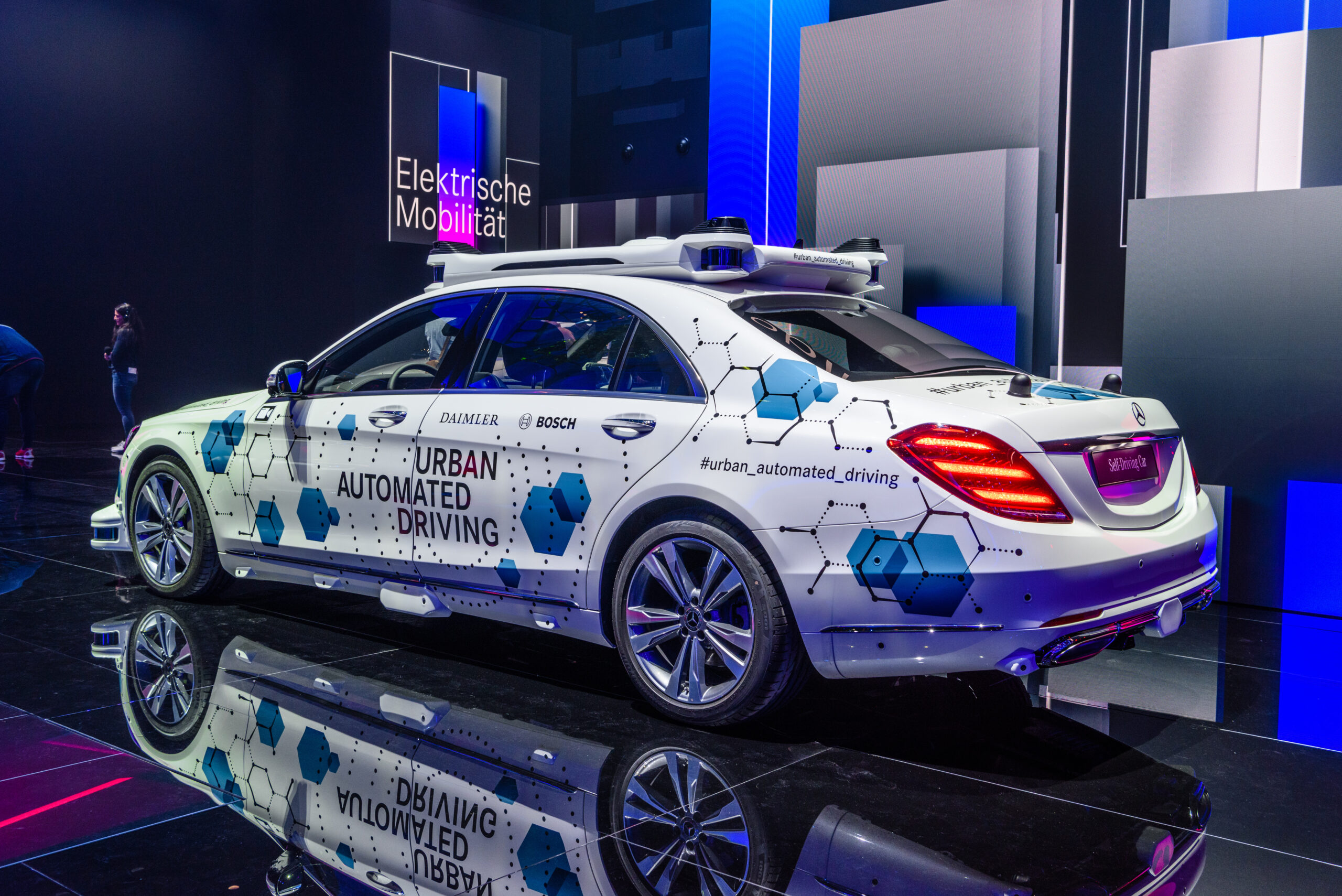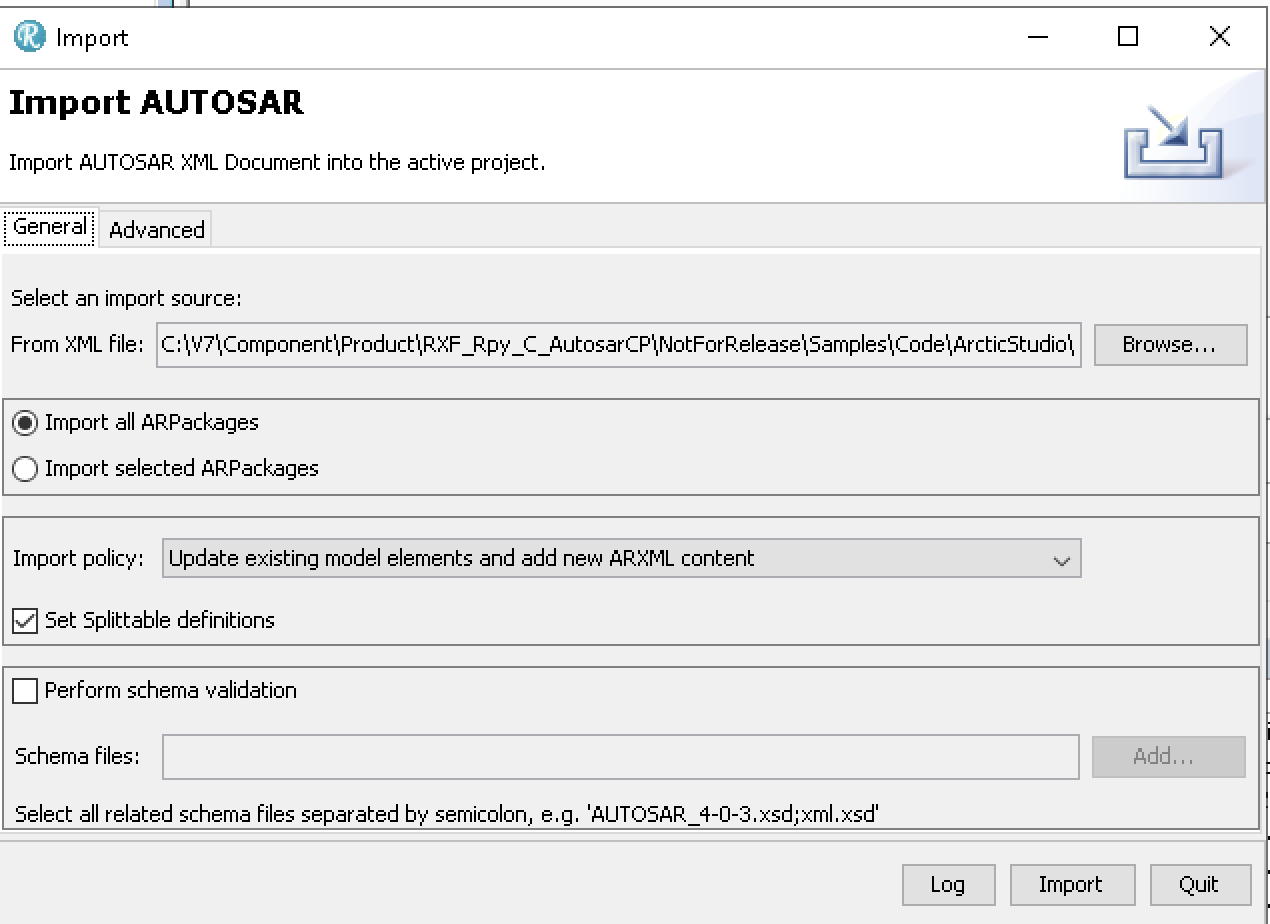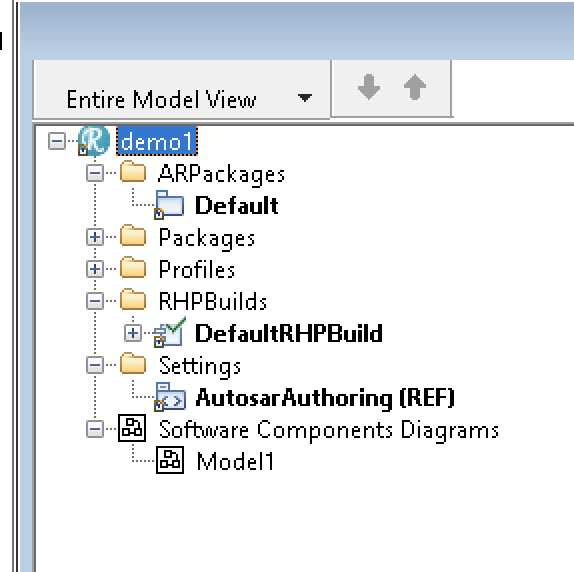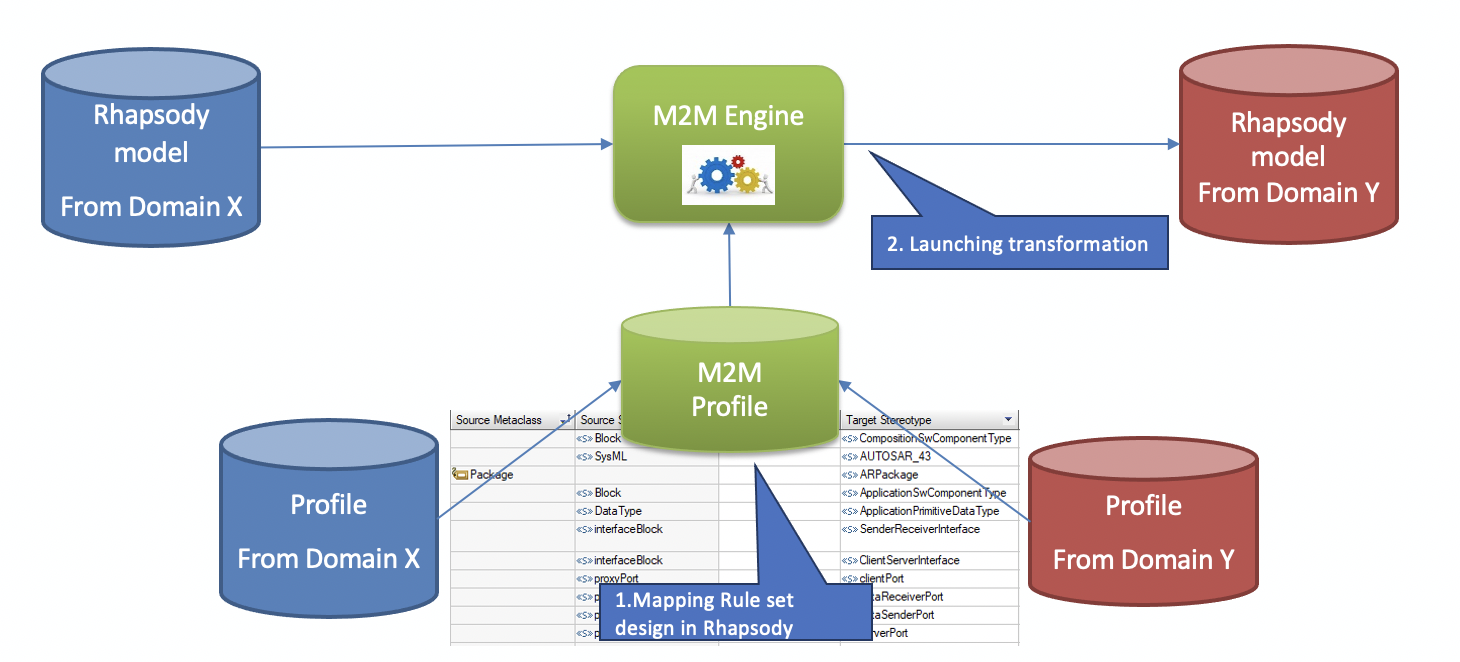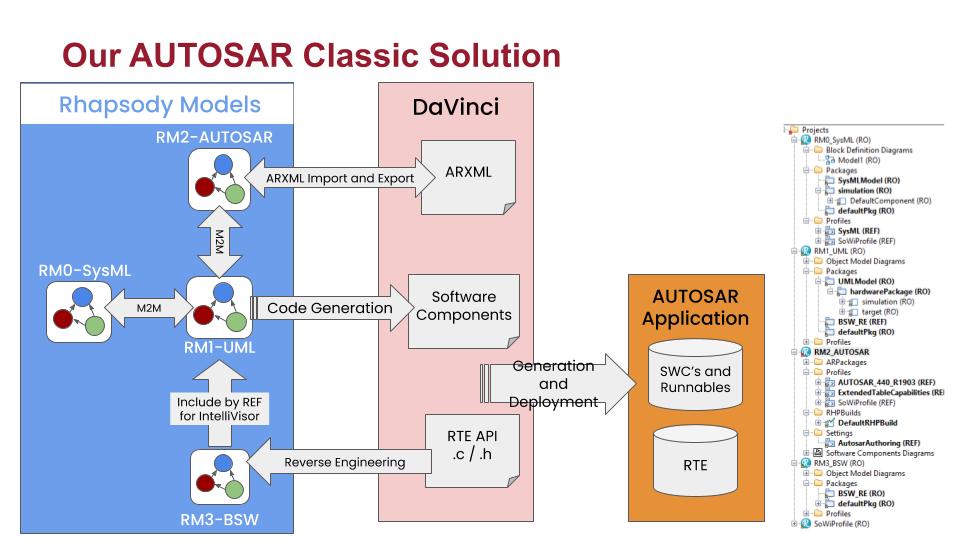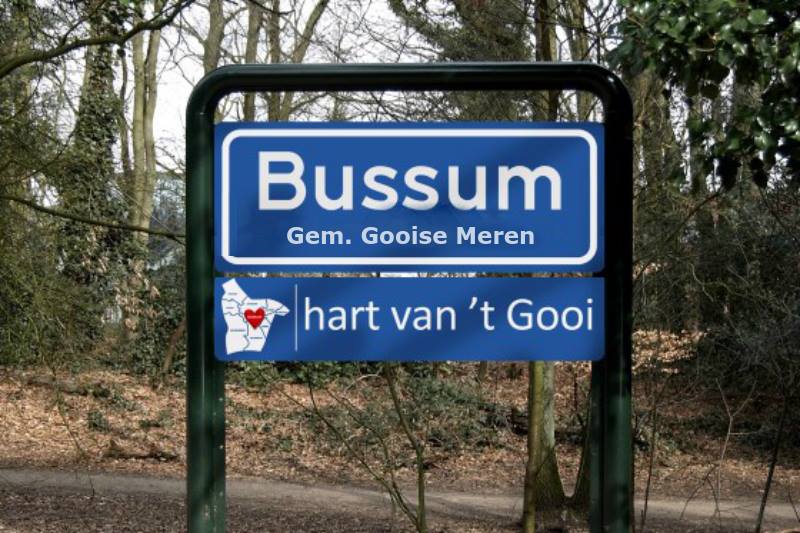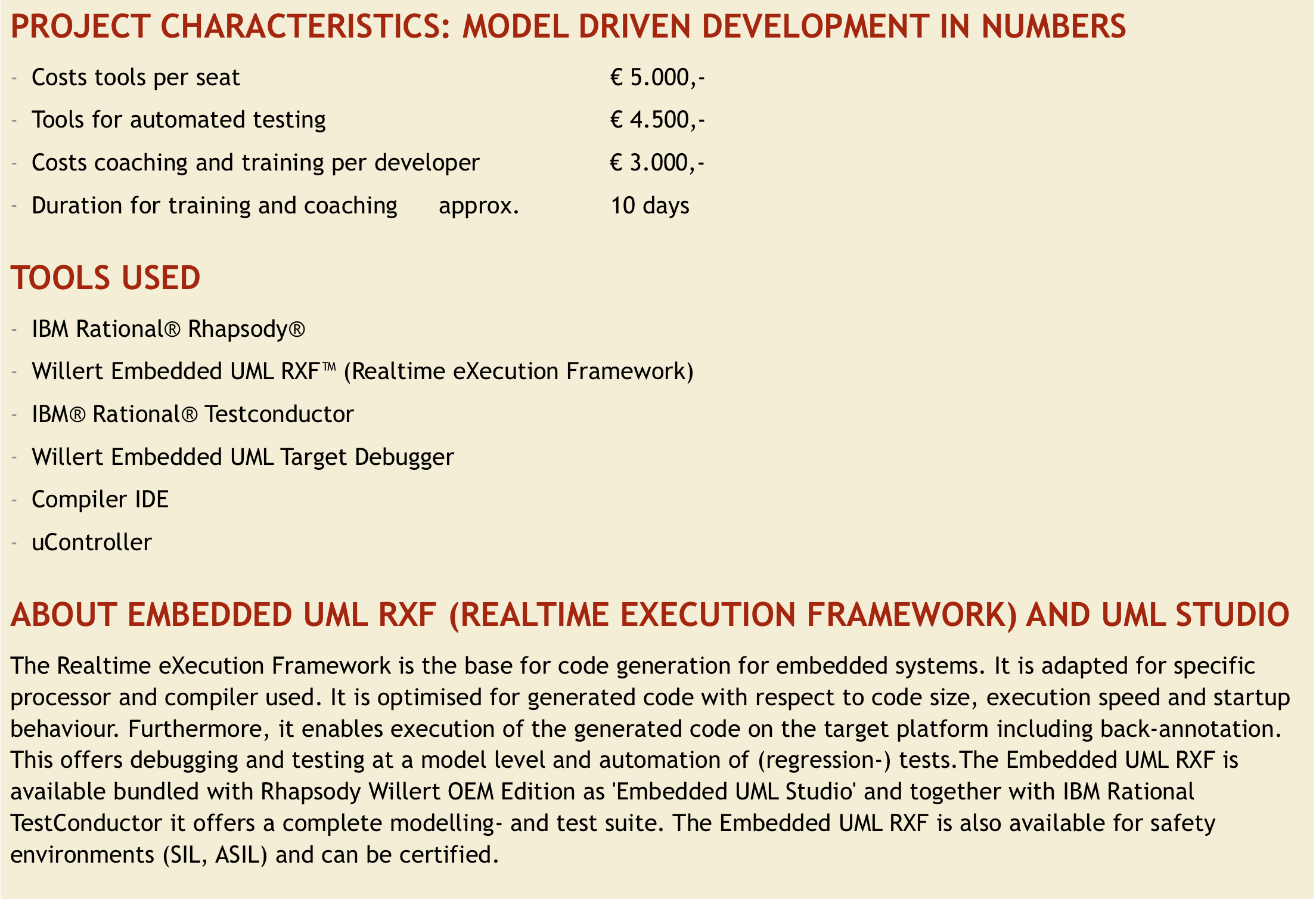Introduction
M2M is a product from SodiusWillert that helps you to save large amounts of time. It converts Rhapsody models made with certain profiles to other profiles. For example, taking a SysML model and convert that to an AUTOSAR model.
How does it work?
It is not really magic… actually you do your own magic. M2M uses a ruleset to define what elements are moved to which other elements, for instance: take a SysML Block and transform it to an AUTOSAR Block.
Now that would be an easy one. You can also make it more complicated. E.g.: You can define that a SysML Block with stereotype “SWC” will be converted into an AUTOSAR SWC.
That is already more interesting. But it doesn’t stop there. The rules allow you to define multiple elements to convert to one element or one element to convert to multiple elements (1:1, 1:m, n:1, m:n)
But then the fun really starts because you can also add functions (written in JavaScript) to do pre-conversion checks (“Do I want this specific element to convert?”) or post-processor actions (:e.g. “Rename this element” or “Create other elements on other places”)
You only sync once?!?
This opens a lot of posibilities to transfer model element between models from different profiles. Using M2M in combination with DiffMerge opens even more possibilities.
This helps you in keeping different models up-to-date, no matter where you make changes.
So you can have multiple different views on your System under Development, a Systems Engineering view, an AUTOSAR view, a Software View and maybe even a source-code view of the used BSW (Basic SoftWare) all of them subject to changes but all of them in sync thanks to M2M.
Put the power where you need it.
Some models have certain possibilities that others don’t have and vice-versa.
This means that you should model in the profile that offers you what you need.
SysML is perfect to model requirements and use-cases and link them, the AUTOSAR model gives you feel insights in all parts of your software and the UML model has a bit of both (and state machines…)
M2M allows you to add your own information exactly where it fits best.
I want to have this!!
That is cool. Contact me to get an evaluation version and an evaluation license.


